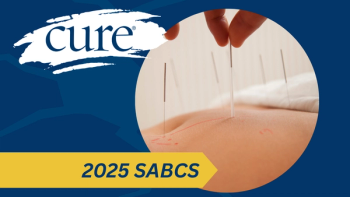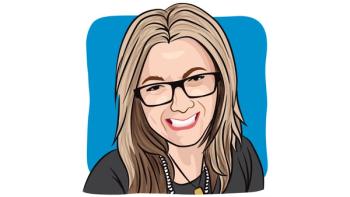
Understanding the Cancer Experience From the Outside Looking In
People who have never experienced cancer may think that life continues as normal after treatment is done, but that’s far from reality.
One of the things that sometimes makes it challenging to explain the cancer experience to someone who has never had it is the common idea that cancer is a “one-and-done" experience — that you do treatment and if it’s successful you ride away into the sunset, and if it’s not there’s a lovely funeral service and a fridge full of casseroles brought over by family and friends.
The cancer success story is amazing. My daughter’s cancer treatment was a match for the cells that invaded her, so she is currently NED, or “no evidence of disease.” But just like a CSI episode where in the final moments a new piece of evidence is discovered that exposes the bad guys, even success stories like my girl’s are forever paused right before that last scene, where no one is certain of the outcome because new evidence can come to light at any time.
Responsible cancer treatment means that the medical professionals involved in the field will always be checking to see if it has come back, particularly in the first five years after the patient achieves NED. This means that no matter how much the cancer patient would like to put the whole experience in the rear-view mirror, and no matter how many minutes or hours or days they go where they blissfully forget that their lives are on pause, a phone call or message will press the play button.
Cancer treatment is awful. There really isn’t a milder descriptor for it. It can involve body parts being removed, medications that make you feel terrible dripping into your veins for sometimes months, radiation that leaves your skin tender and sometimes burned. So when someone who has gone through THAT needs to go for a test to see if it’s back it’s not the test itself that causes distress. What causes the distress is knowing what you could be in for if the results show that the beast is back. And not being sure that this time, you’ll be as lucky as you were the first time.
My daughter’s life may, from the outside, appear completely back to normal. She can go to work or socialize, and you would never know what she has been through. For some patients, they have moved on to new jobs and new friends and chosen not to share what happened to put it behind them. So understandably, it can be confusing two or three years down the road if they become withdrawn, or irritable, or unable to focus on tasks and there doesn’t appear to be a reason.
But if you haven’t been there, you can’t have any idea of the fear that needs to be consciously dealt with until the results come back. The amount of energy the cancer patient often must use to maintain the calm is huge. All the coping techniques, from meditation to self-talk to eating well to getting outdoors, all require a different level of effort to be successful and that can be exhausting.
This is an important part of cancer recovery that needs to be talked about. Cancer treatment focus tends to be about the immediate, or the crisis, and once that part is over attention is turned to the next one in line. I can appreciate that time can be of the essence in so many cases and full speed ahead can make the difference between the sunset and a casserole so I’m not in any way suggesting we lose that.
I just wish we could educate the public about how many cancer patients who are success stories live their lives in three-month, six-month or 12-month increments. I wish we could encourage compassion for them and their families as they move forward and admire the work, they do in the in-between times to laugh, and play, and enjoy. I have a front-row seat, and it’s the most remarkable display of strength and determination I have ever seen.
And I’ve seen a lot.
For more news on cancer updates, research and education, don’t forget to





